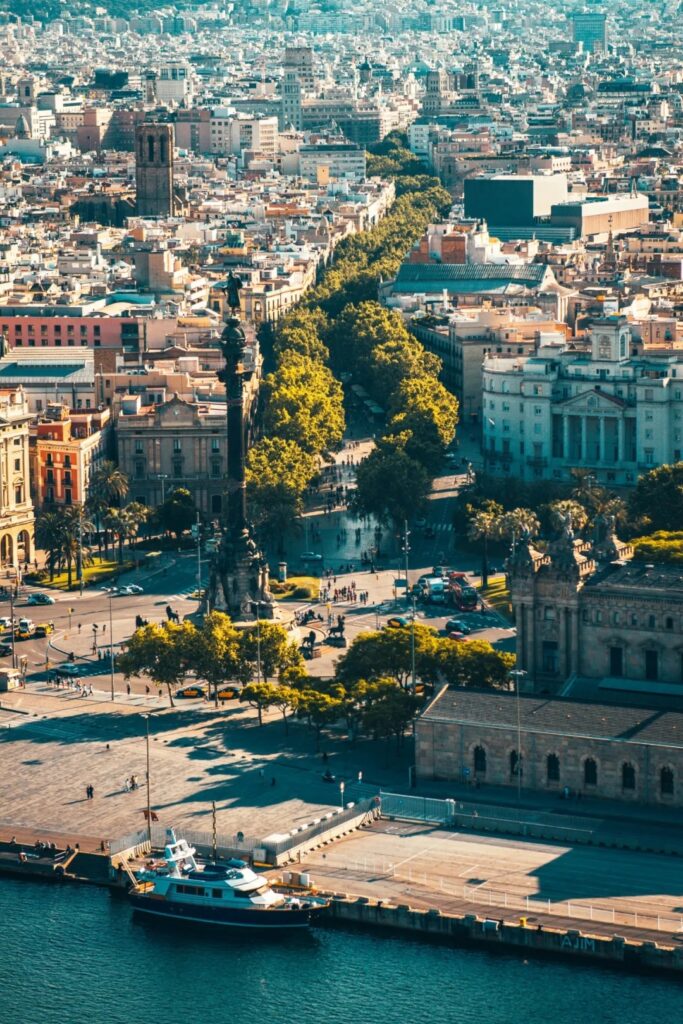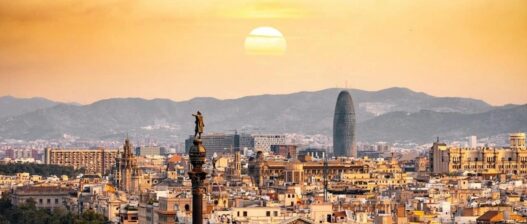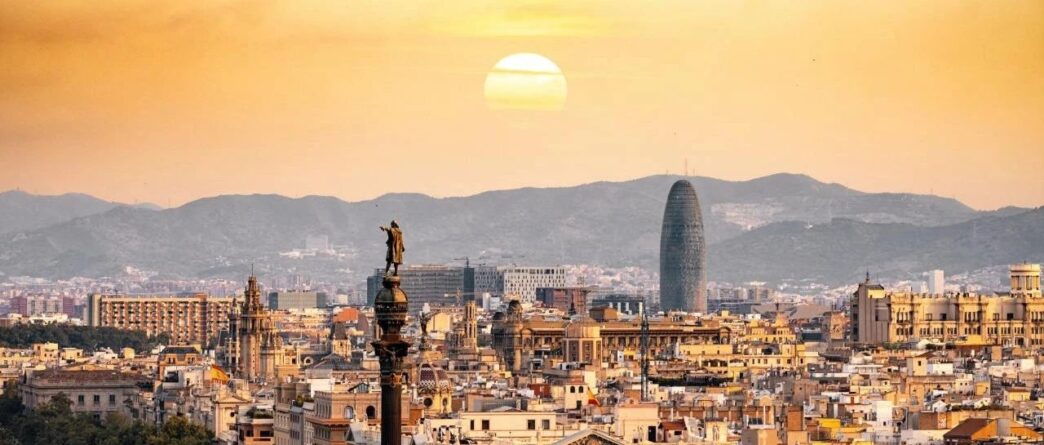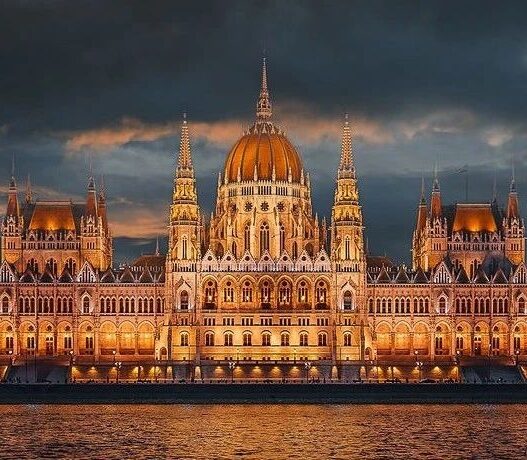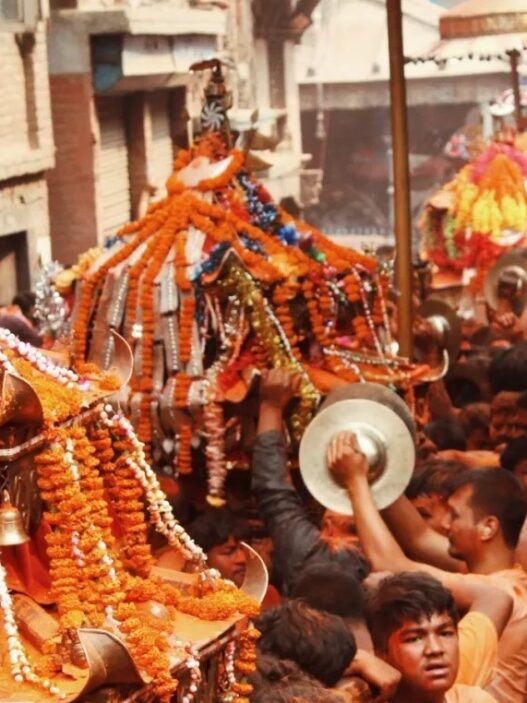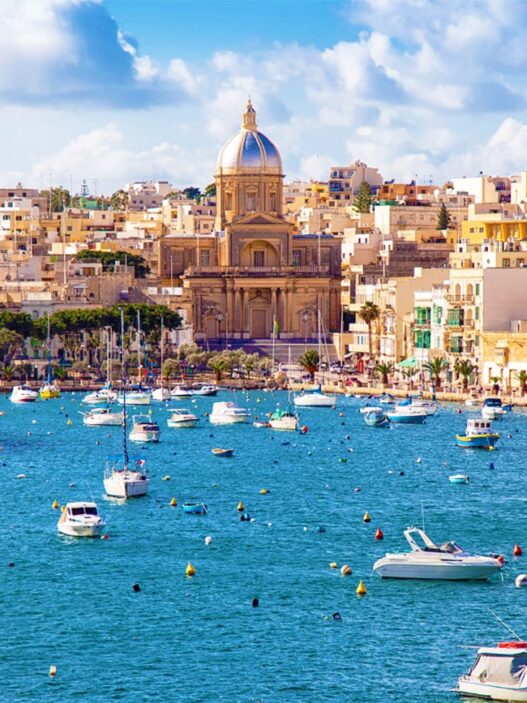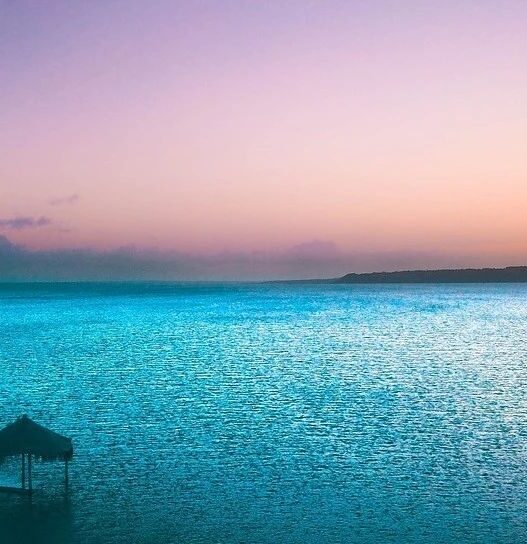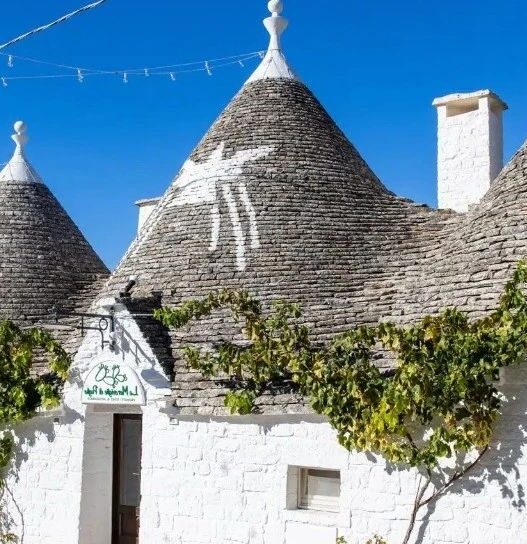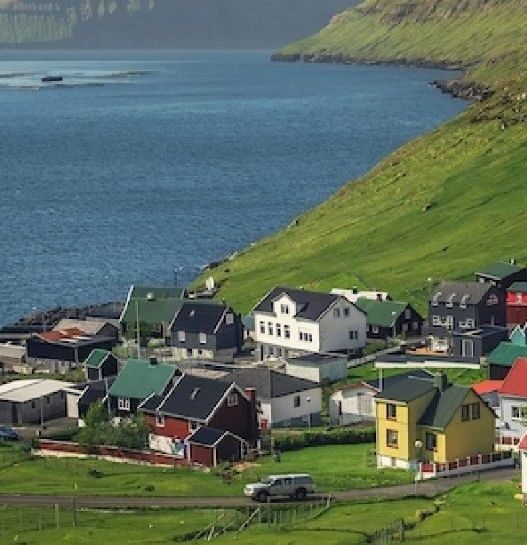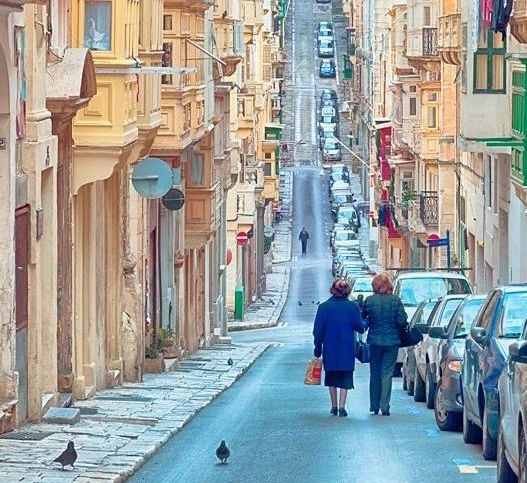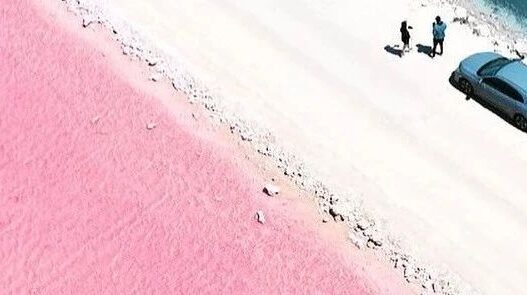Spain, like a poem, is serene yet filled with passion. It is a country that captivates, with every inch of land steeped in rich history and cultural ambiance.
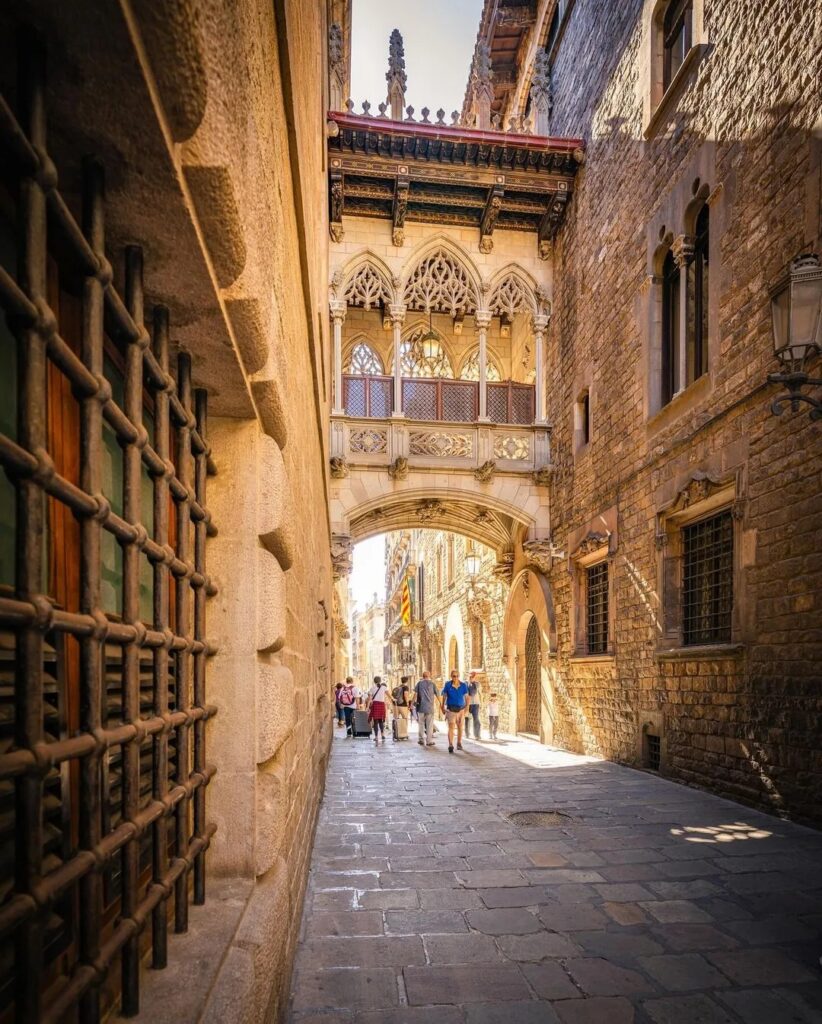
And Barcelona, Spain’s second-largest city, seems to be a symphony of passion and artistry, playing a vibrant and lively tune.
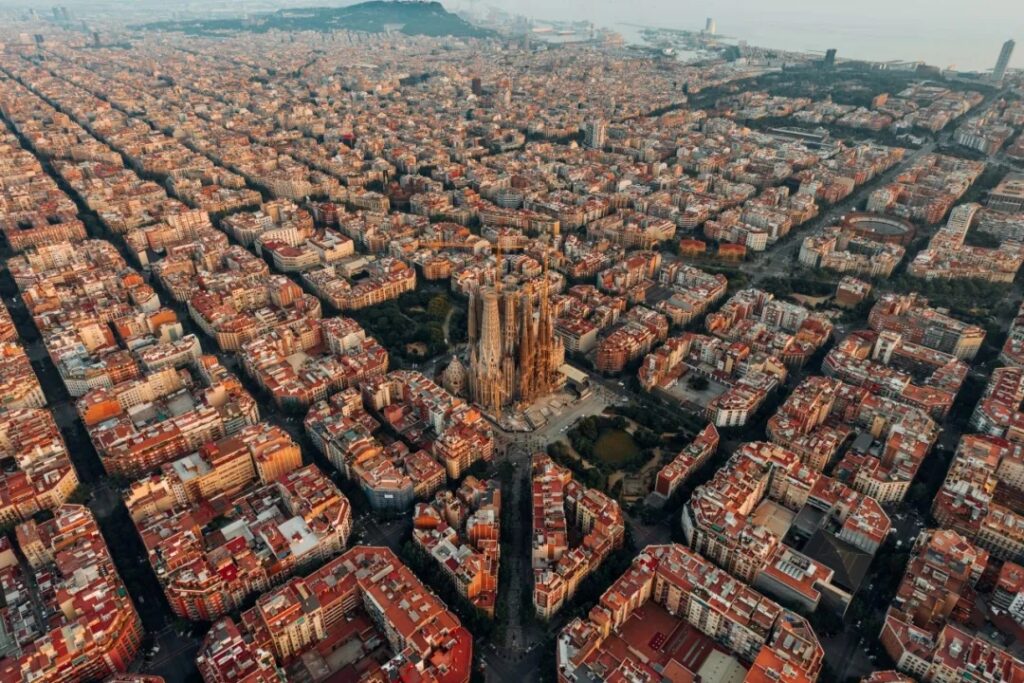
Located on the northeastern coast of the Iberian Peninsula and on the edge of the Mediterranean, Barcelona, as Spain’s second city, is not only blessed with picturesque scenery and ancient landmarks but is also known as the “Pearl of the Iberian Peninsula,” a renowned tourist destination in Spain.
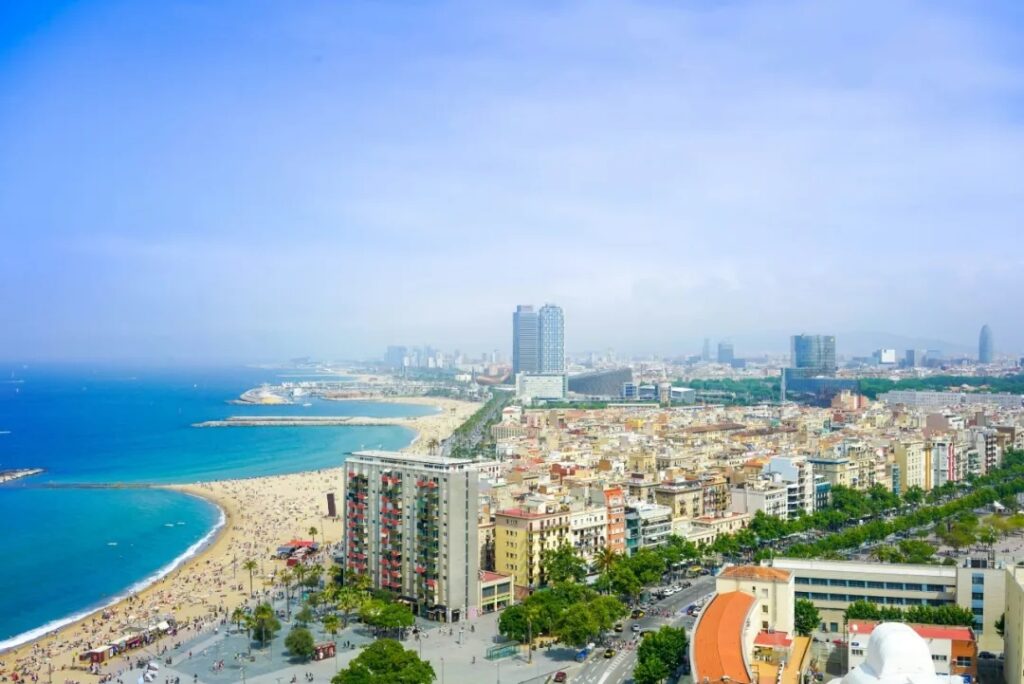
The soul of Barcelona lies in those gleaming architectural marvels. The Sagrada Familia seems to come from a fairy-tale dream, its towering spires reaching for the stars, while Casa Batlló’s pleasing blues give the impression of entering an underwater world…
The works of architects like Gaudí adorn the city like a flower of art, each petal displaying brilliant colors.
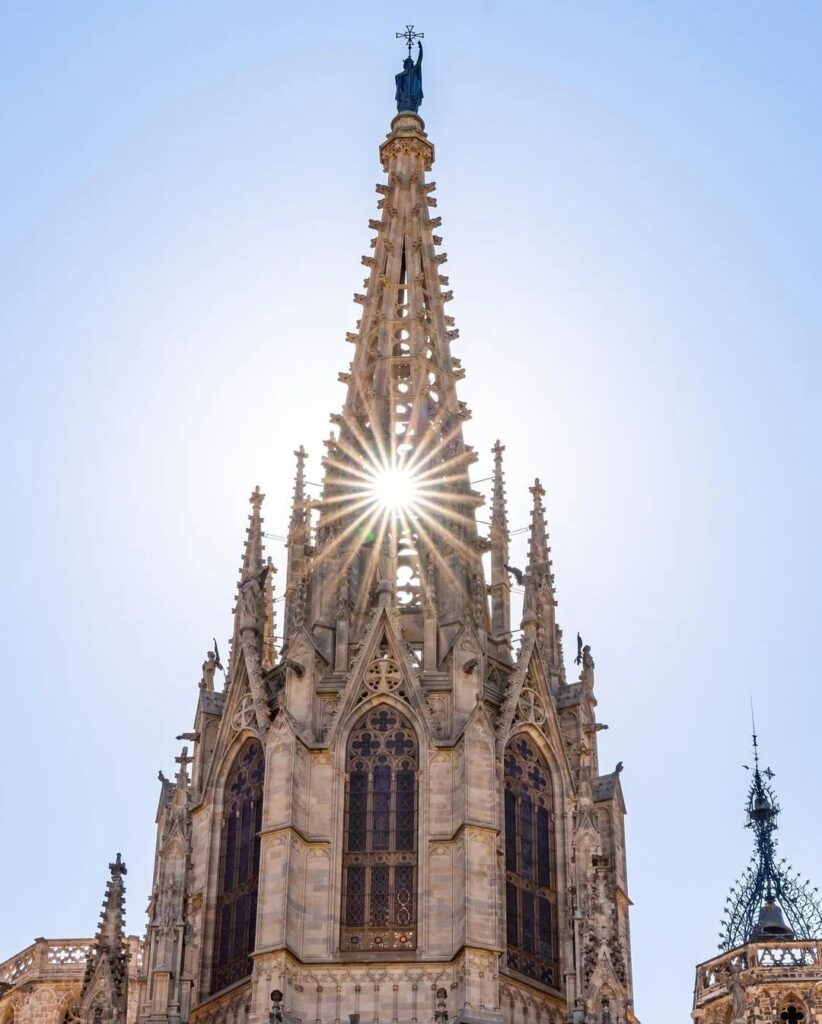
Perhaps you’ve come to witness the architectural splendor of the Sagrada Familia; perhaps to trace the youthful footsteps of Picasso; perhaps to experience the sacred atmosphere of Camp Nou, the home of FC Barcelona; or maybe just to lazily bask on the beach under the radiant sun.
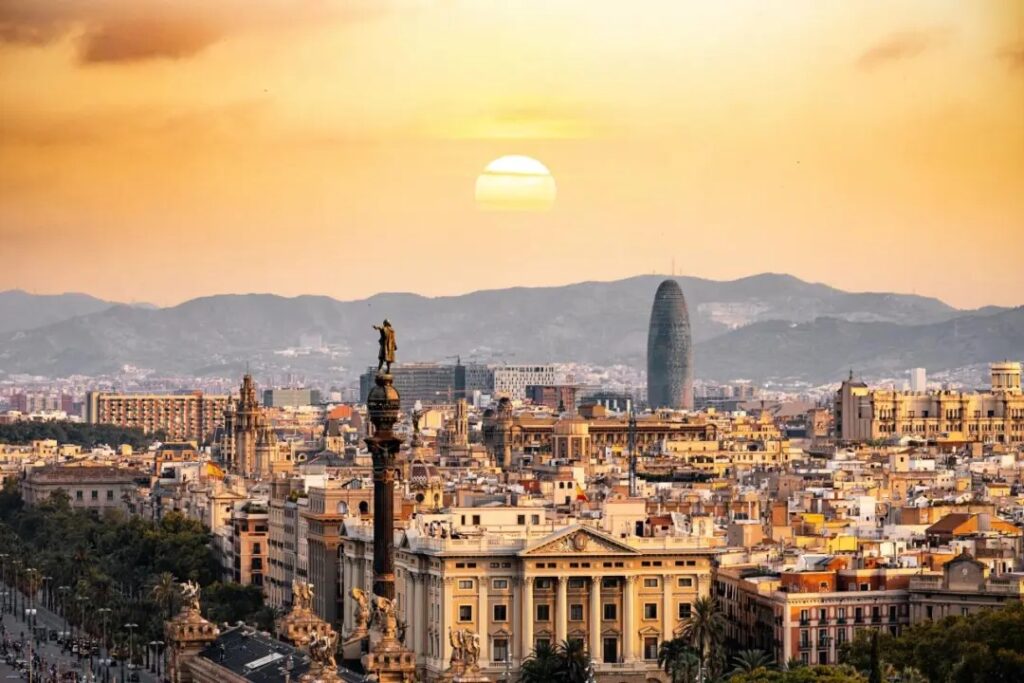
No matter the reason, one is sure to be deeply captivated by the allure of this city.
Sagrada Familia
The Sagrada Familia is the precious legacy left to the world by architect Gaudí, though he did not live to see its completion. This cathedral embodies his entire heart and creativity.
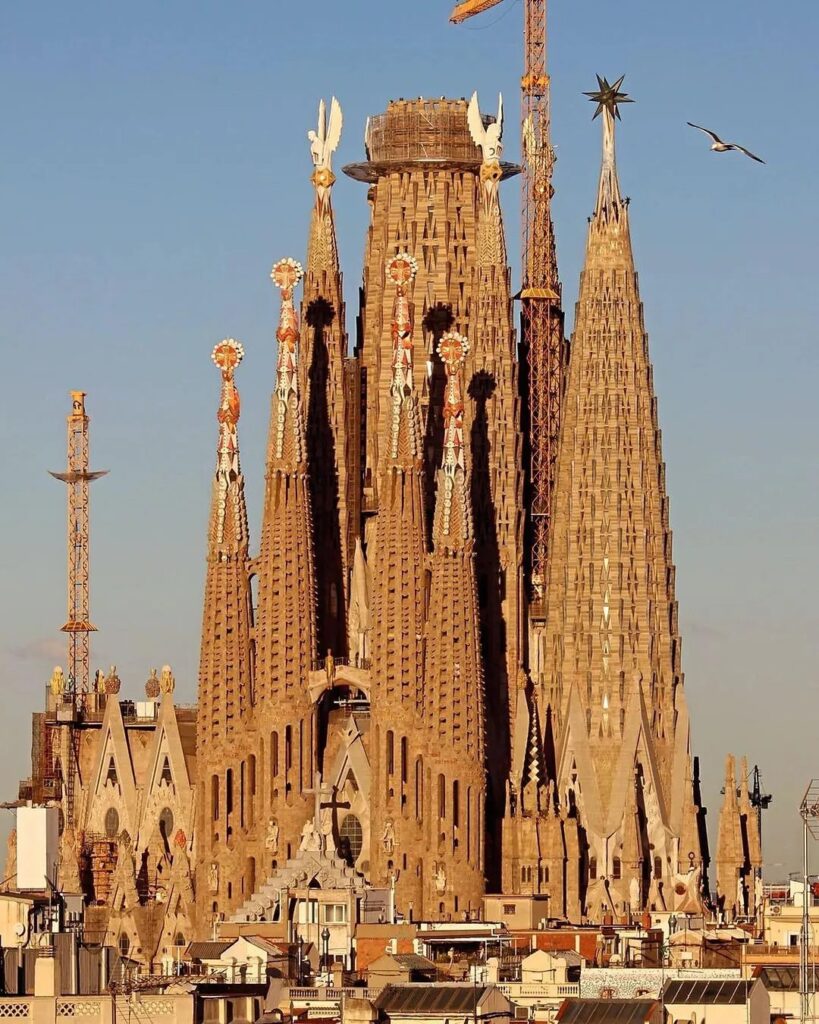
Inside the Sagrada Familia, Christian elements blend with Gaudí’s unique artistic style, offering a one-of-a-kind visual experience.
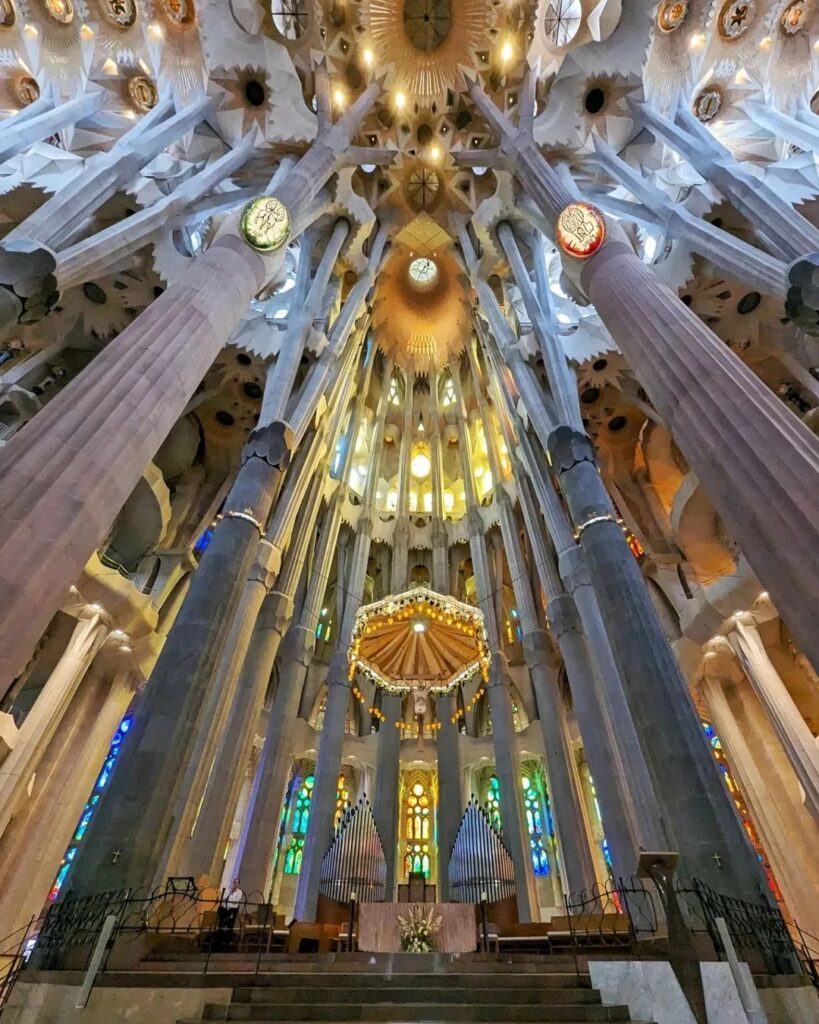
Yet, the most astonishing aspect is the play of light within the Sagrada Familia. Every visitor is amazed by the beautiful light streaming through the vast stained-glass windows, casting colorful rays into every corner of the cathedral. The light beams through the glass, falling onto floors, walls, and columns, creating an enchanting and intoxicating atmosphere.
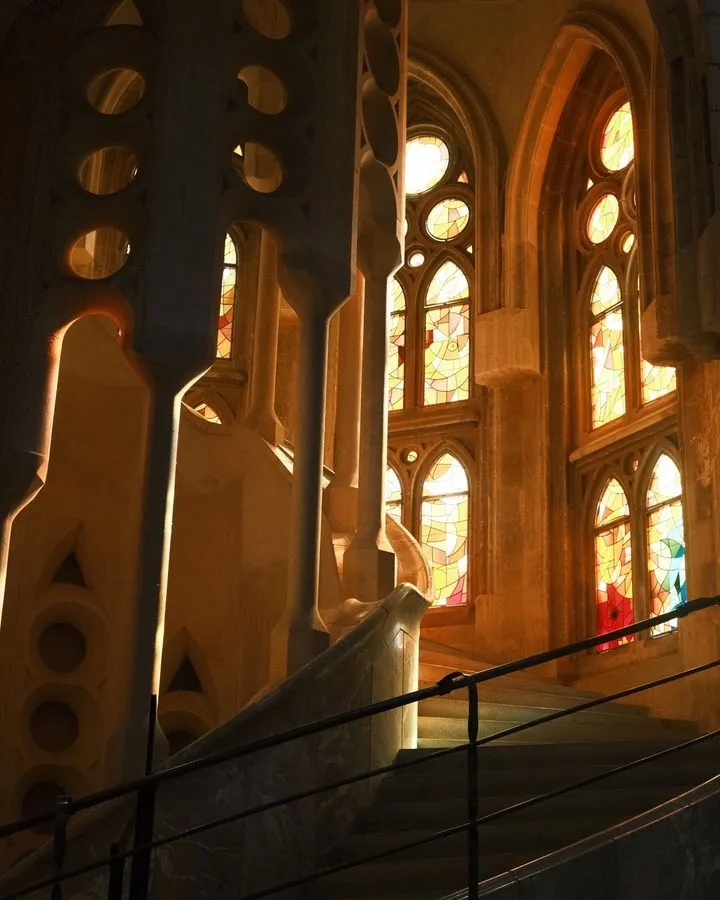
Casa Milà (La Pedrera)
Casa Milà, also known as “Stone Quarry House,” is another masterpiece by Gaudí and the last private residence he designed. This building showcases Gaudí’s unique creativity and inspiration from nature.
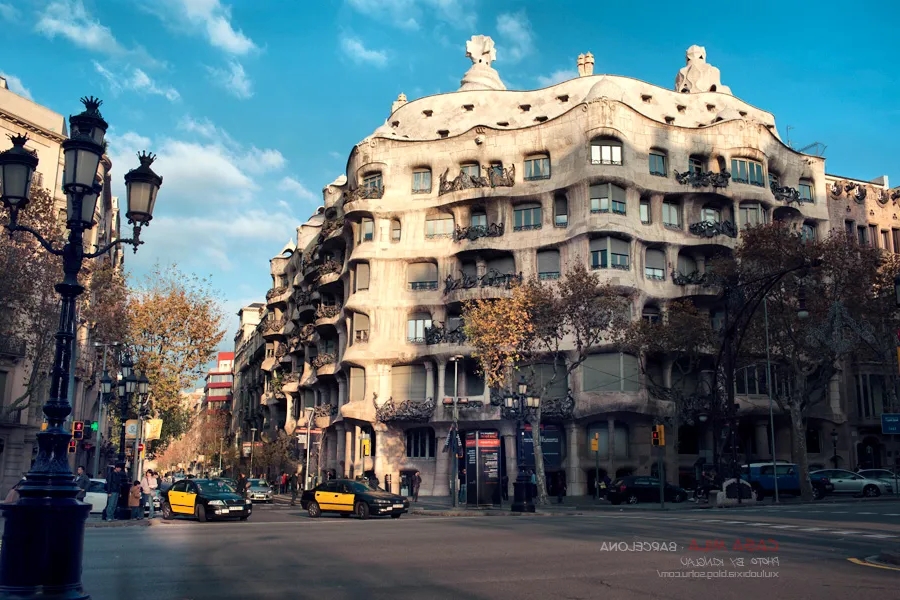
Unlike traditional architecture, Casa Milà is imbued with imagination and bizarre artistic elements. The building boldly adopts a streamlined design, giving it a soft, flowing feel, enhancing its unique charm.
The shapes of the rooms are almost entirely circular, with ceilings, windows, corridors… rarely featuring a straightforward rectangle, each corner exuding the charm of art and innovation.
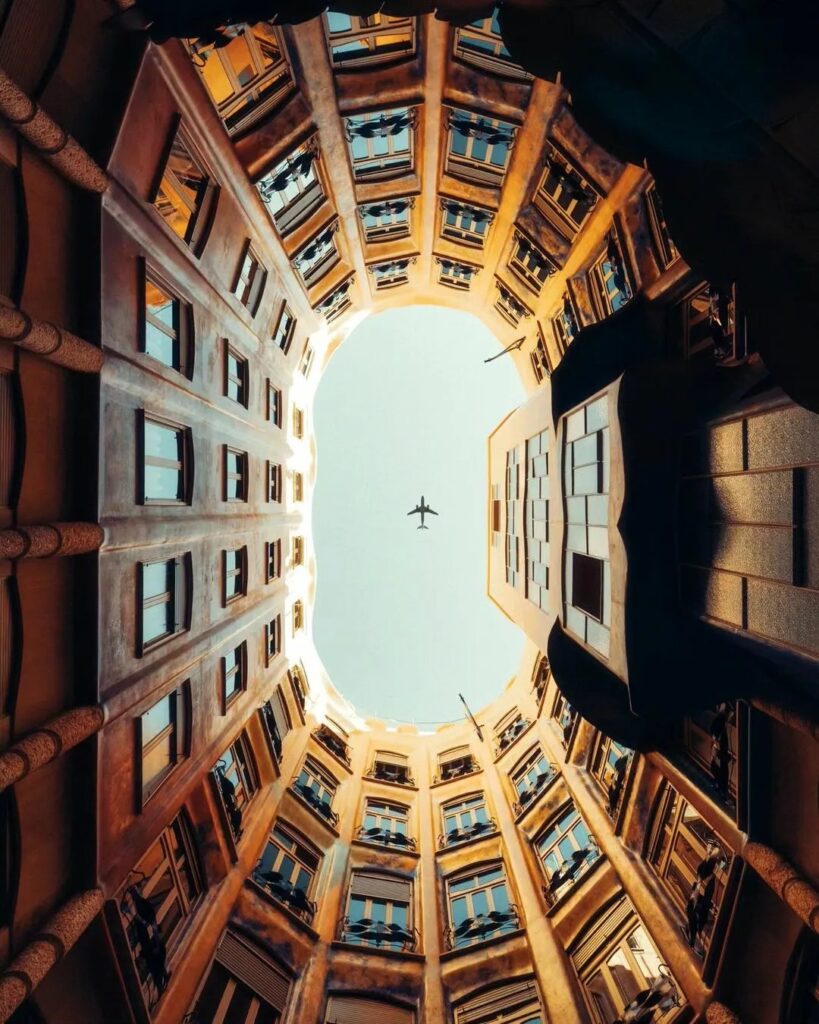
Casa Batlló
Upon entering Casa Batlló, one is met with its distinctive design. The entire house features soft, wave-like designs with no sharp edges, as if shaped by the wind of nature.
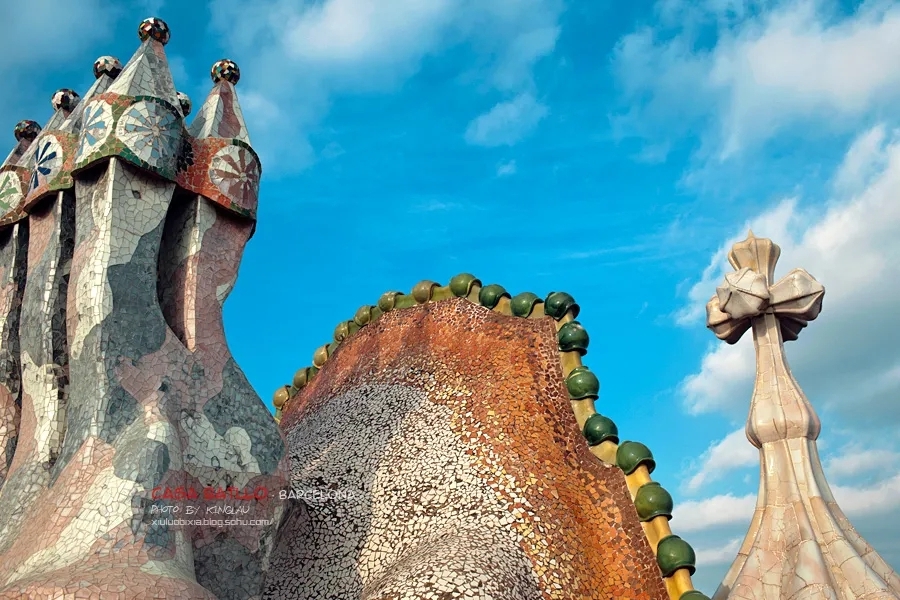
This unique curve design evokes thoughts of caves, fish backs, and dragon spines, giving the impression of a fairy-tale cottage.
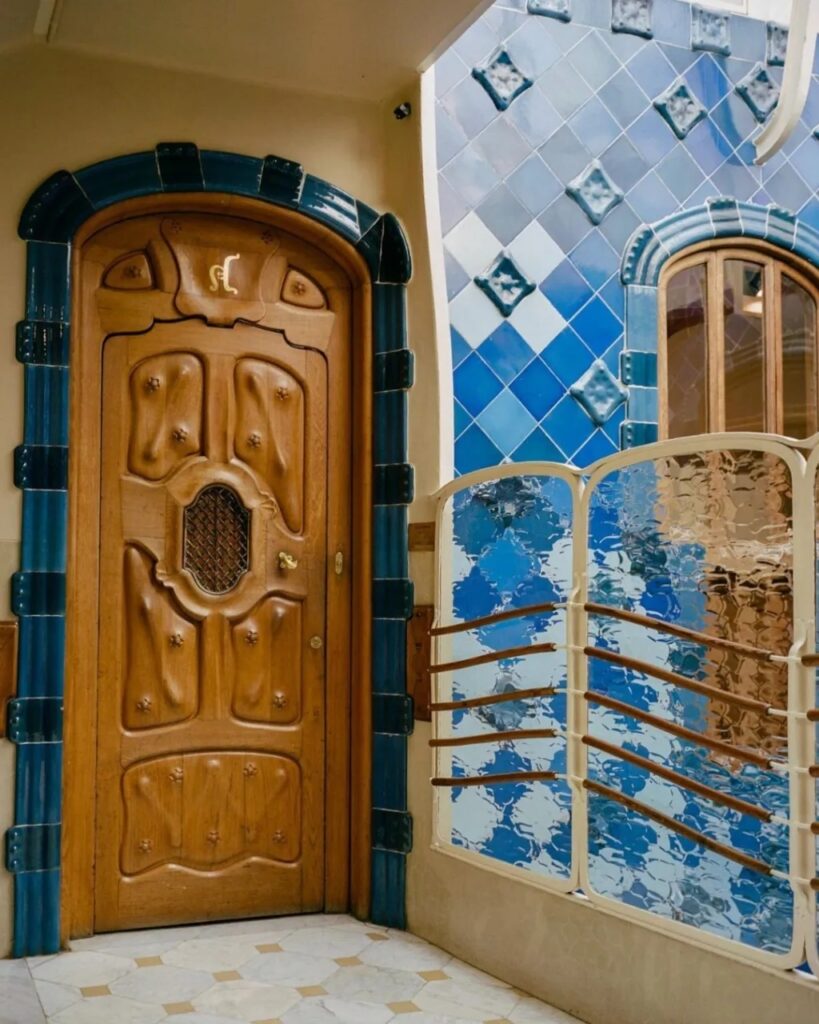
Not only is the interior unique, but Casa Batlló’s exterior is also awe-inspiring. The walls are inlaid with vibrant ceramics, radiating dazzling colors, resembling an impressionist painter’s palette, but the colors are harmonious. Salvador Dalí once compared this facade to “a tranquil lake.”
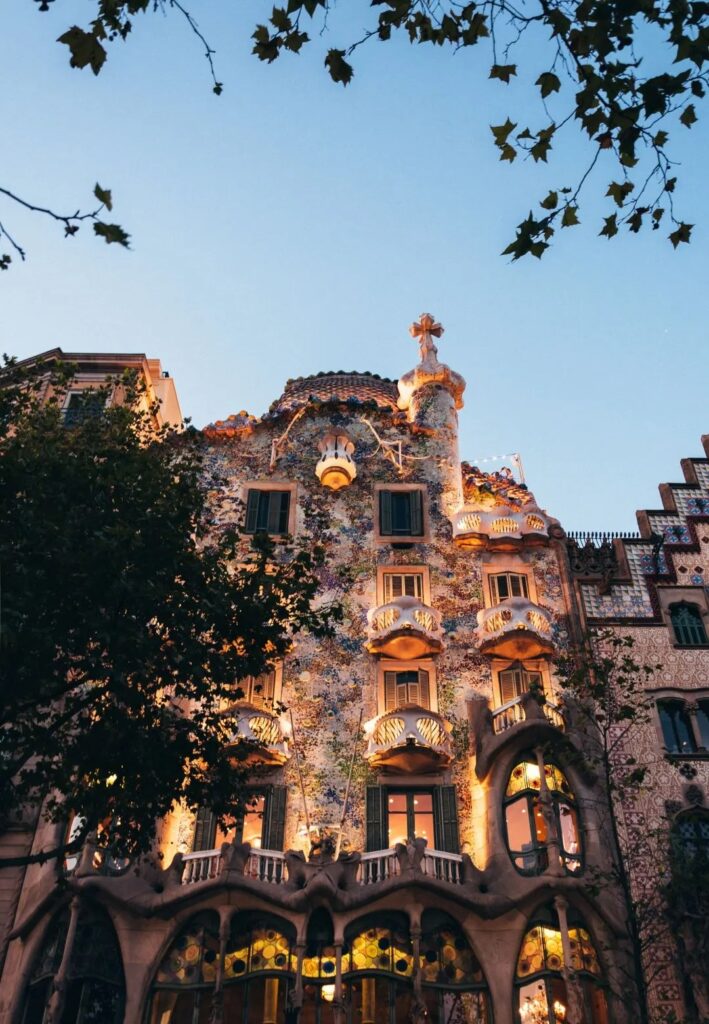
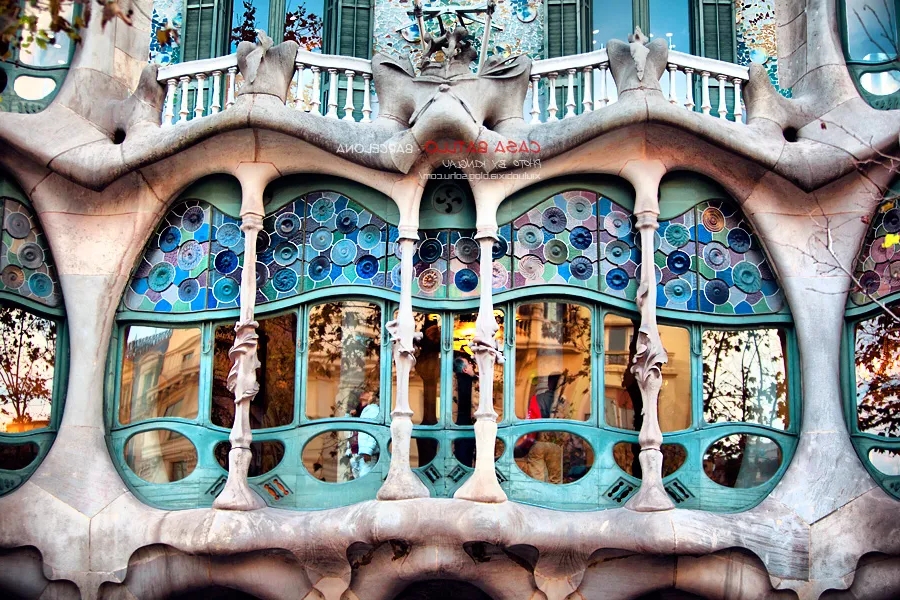
Barcelona Cathedral
The Barcelona Cathedral is a stunning example of Gothic architecture, majestic and steeped in religious and historical gravitas.
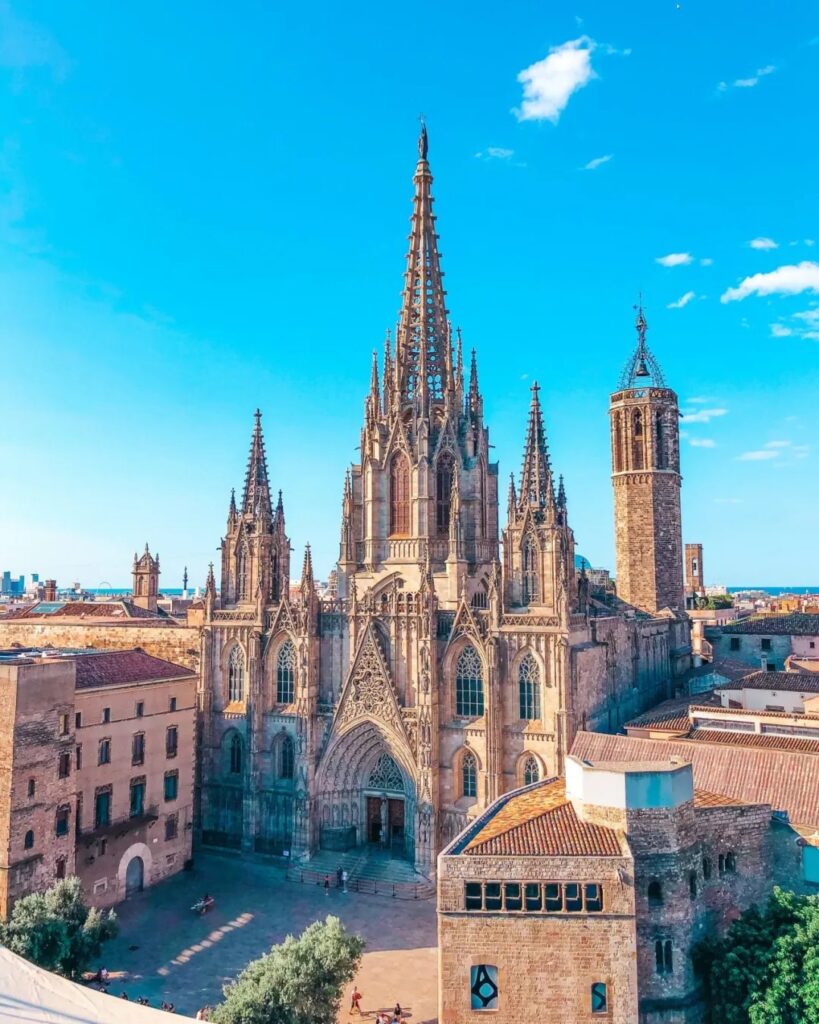
Stepping into the Barcelona Cathedral, one is overwhelmed by the solemnity within.
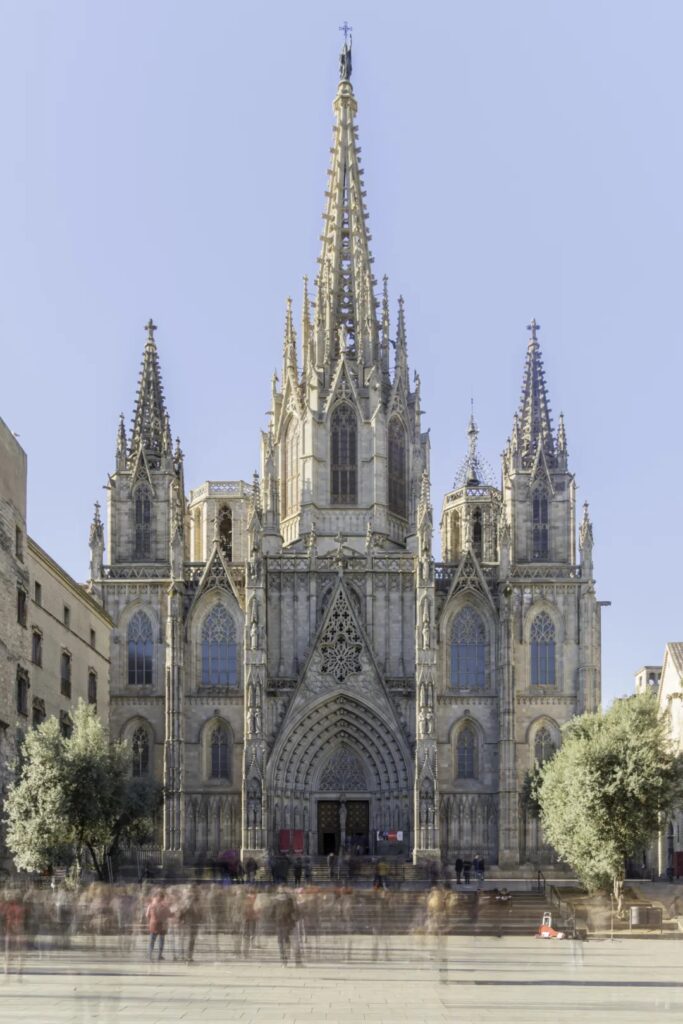
The towering spires and arched cloisters exude a mesmerizing charm, with countless exquisite religious frescoes, sculptures, and various silverware shining brightly.
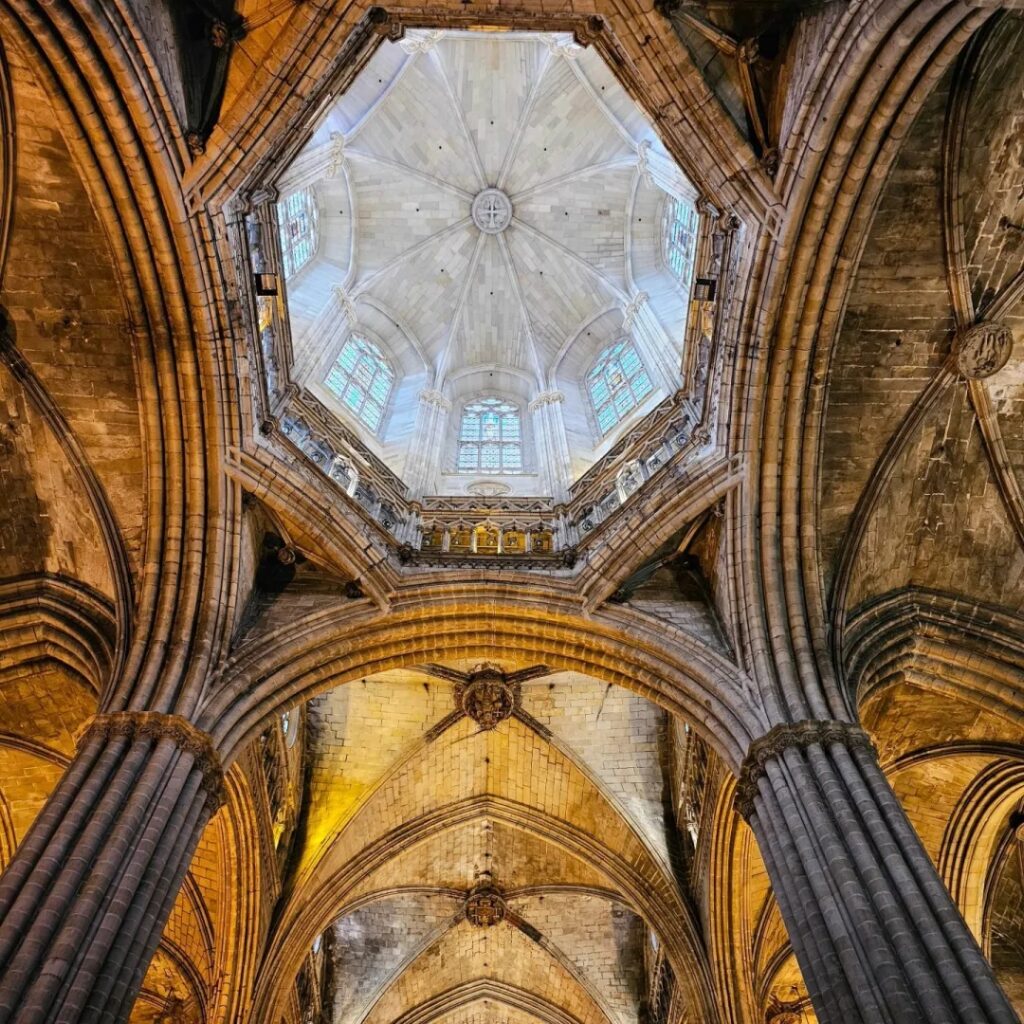
Park Güell
Park Güell is a uniquely renowned attraction in Barcelona. Upon entering, one is immediately drawn to two peculiar 3D fountains.
One depicts the guardian of Catalonia—the chameleon, and the other represents Catalonia itself—a giant lizard. These fountains are not just artistic masterpieces but also vivid interpretations of Catalan culture and spirit.
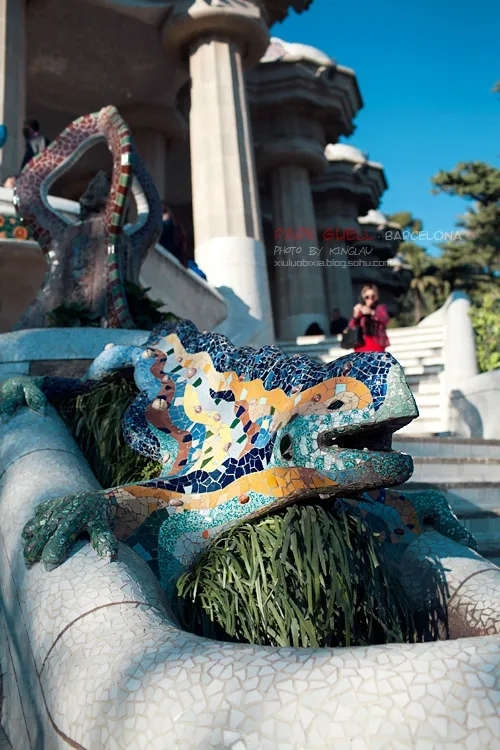
Strolling through the park’s steps, fountains, walkways, and squares, you’ll find that most are adorned with colorful mosaic tiles.
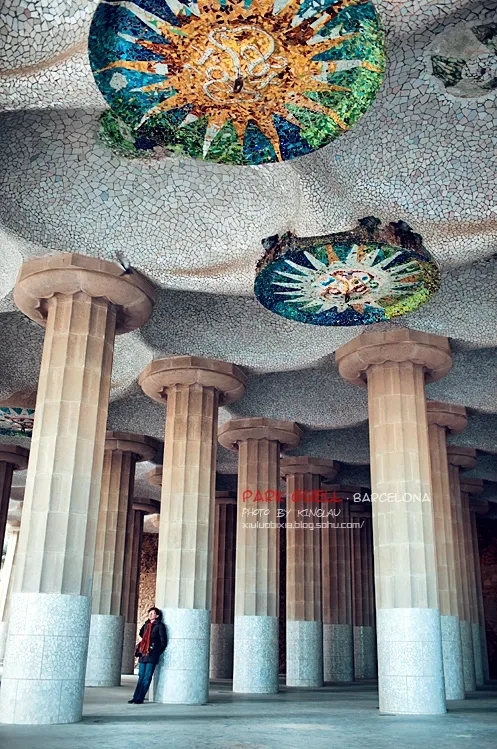
These vibrant tiles seem to embellish the entire park, creating a lively and artistic ambiance. Each tile is like a small piece of art, radiating dazzling light under the sun, adding a unique charm to the park, making visitors feel as if they’ve entered a magical world of fairy tales and exotic colors.
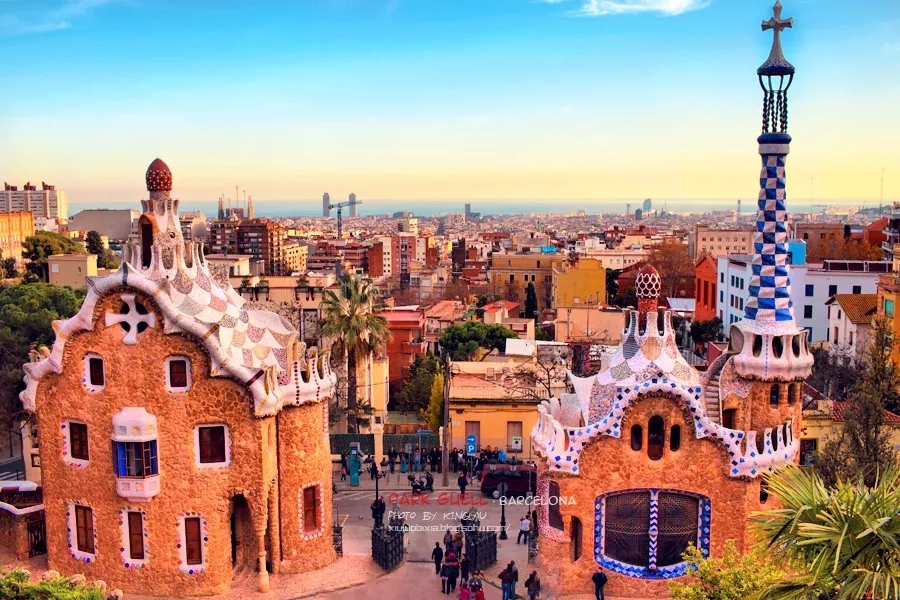
Barceloneta Beach
Barceloneta Beach, also known as Little Barcelona Beach, lies in the southeastern part of the city, extending into a triangular area towards the sea. It’s one of Barcelona’s most popular beaches.
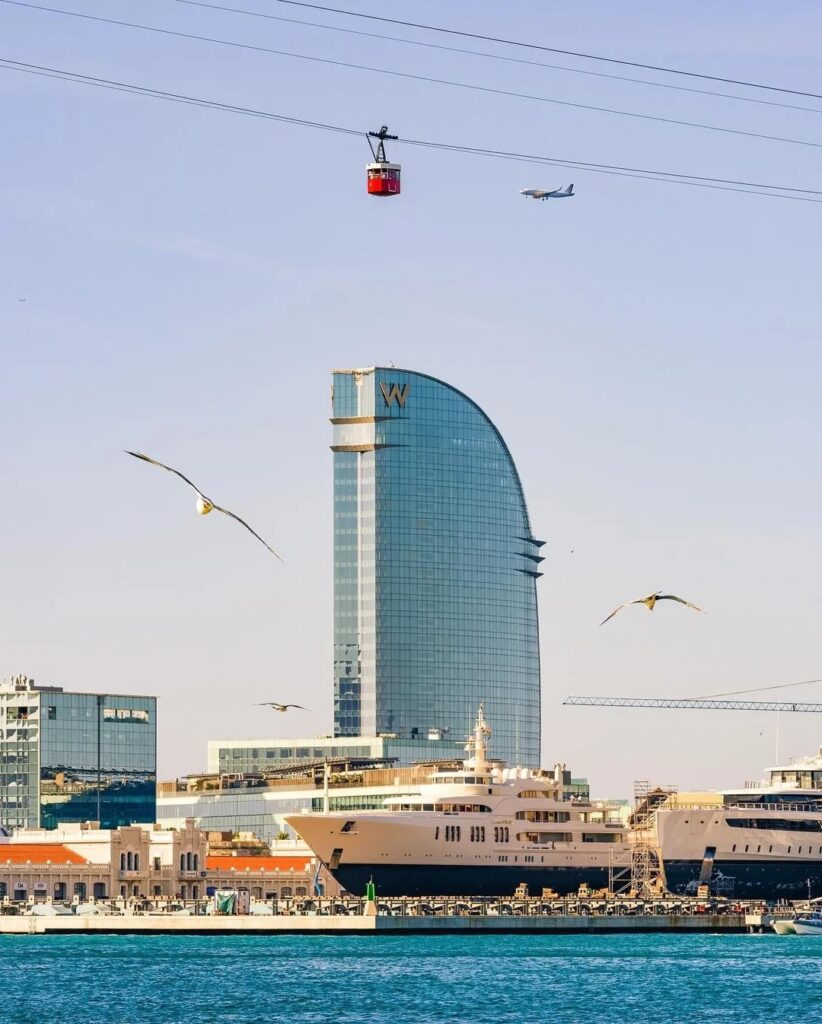
The golden sands reflect the clear waters, with shallow green waves close by and deep blue sea in the distance. In such a setting, even worries can be momentarily forgotten.
Whether it’s basking in the sun on the beach or engaging in various water activities, Barceloneta Beach offers a delightful and relaxing experience.
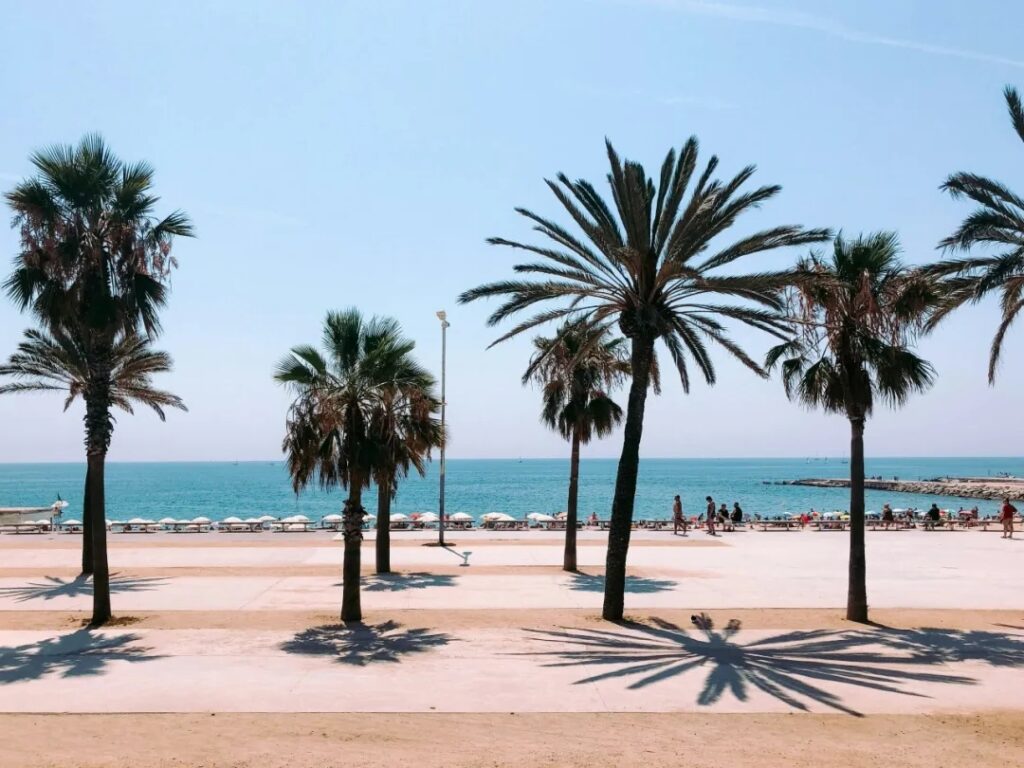
La Boqueria Market
La Boqueria Market is one of Barcelona’s oldest and most authentic food markets, a paradise for local foodies and a magnet for camera-toting tourists.
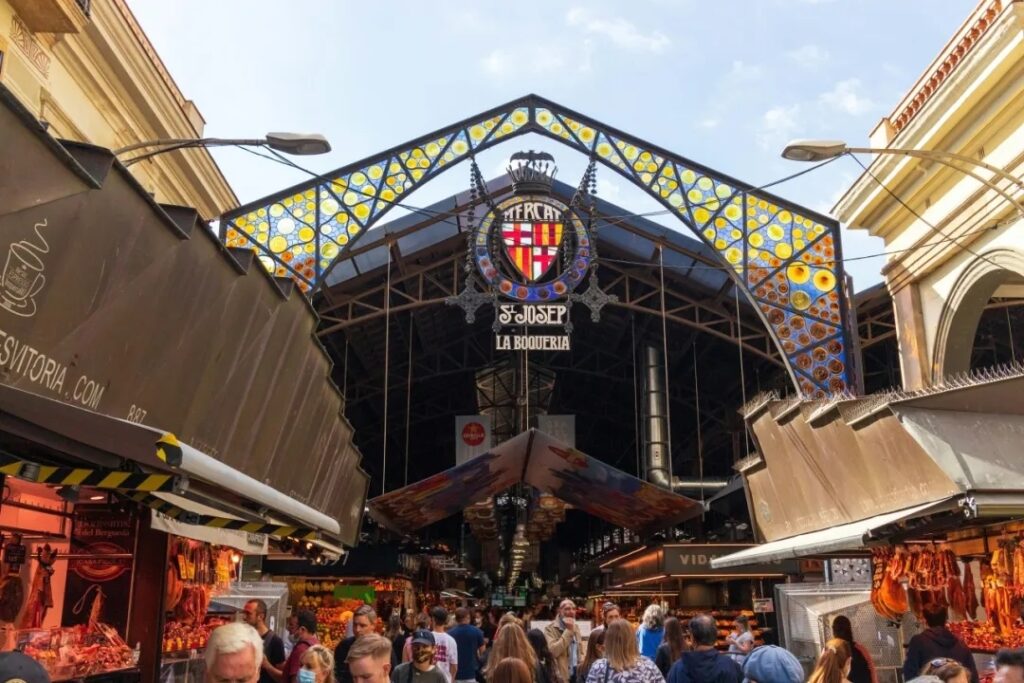
Upon entering La Boqueria, one is greeted by an array of fresh fruits and vegetables. Iberian ham, cheese, and seafood are equally cherished, with their quality and flavors earning high praise.
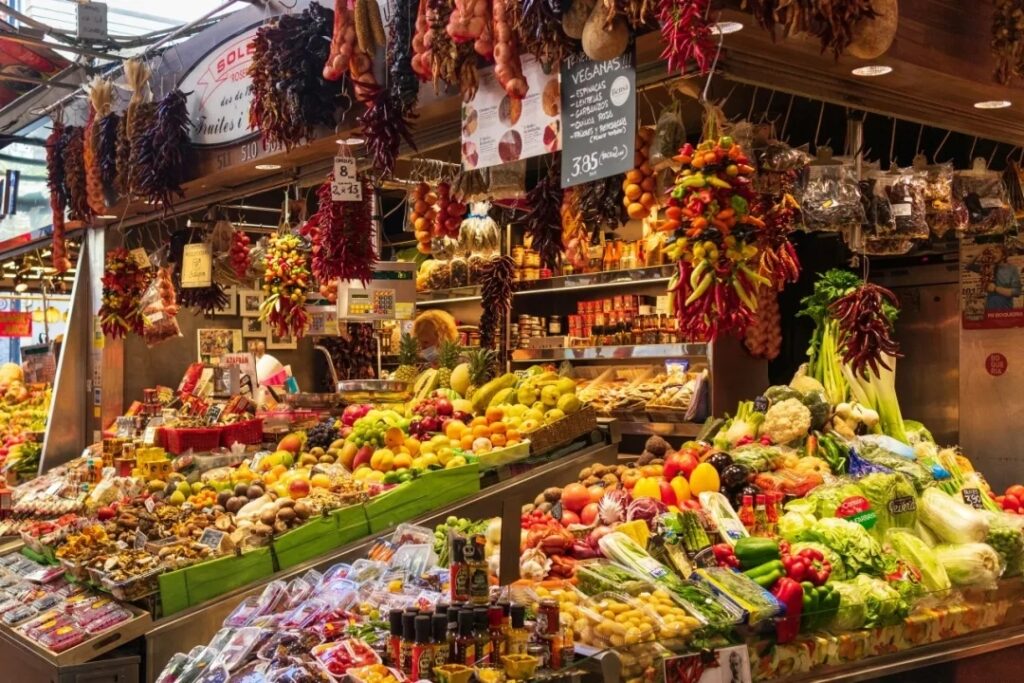
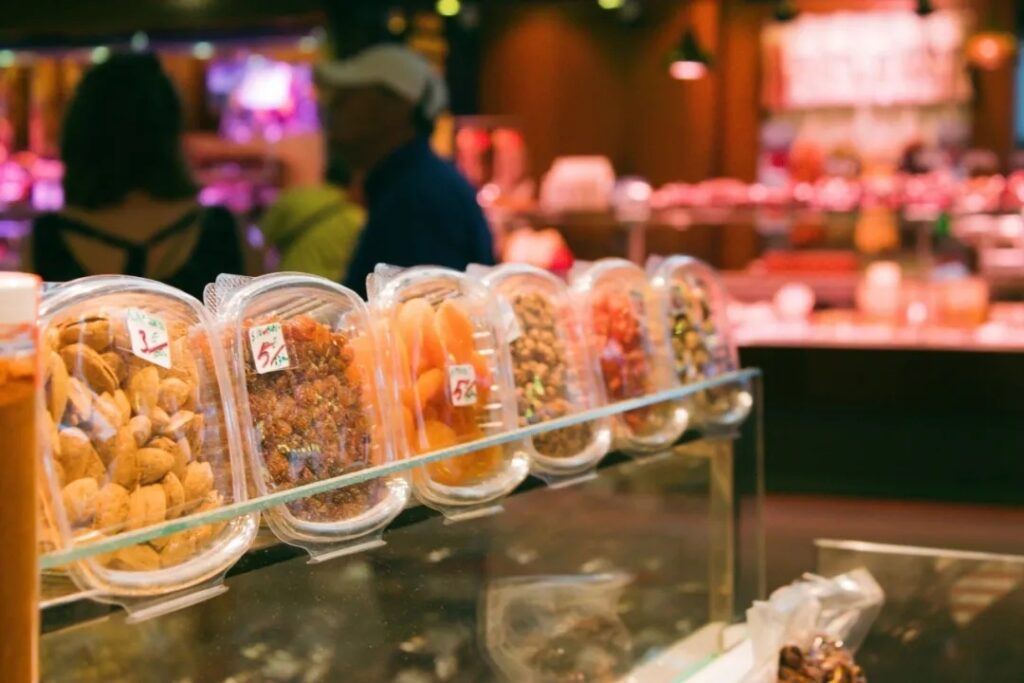
Palau de la Música Catalana
The Palau de la Música Catalana is one of Barcelona’s most striking modernist buildings, designed by master architect Domènech i Montaner in 1908. It’s renowned for its vibrant sculptural and ceramic mosaic decorations, presenting a unique artistic charm.
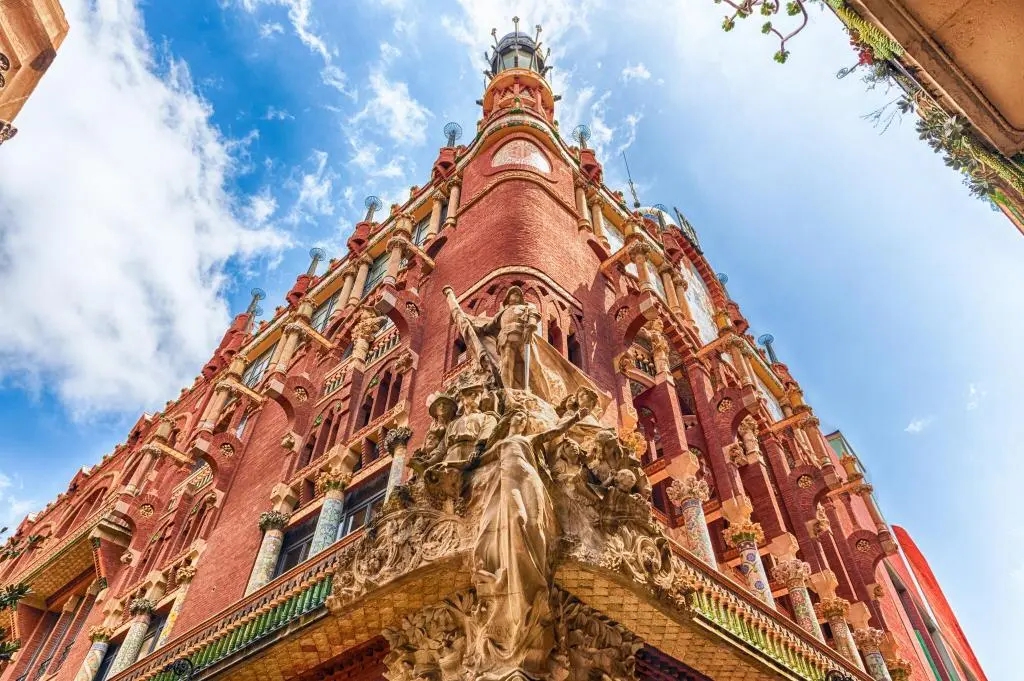
The exterior of the music palace is adorned with numerous colorful artworks. Sculptures, stained glass windows, mosaics, and paintings everywhere highlight the building’s uniqueness.
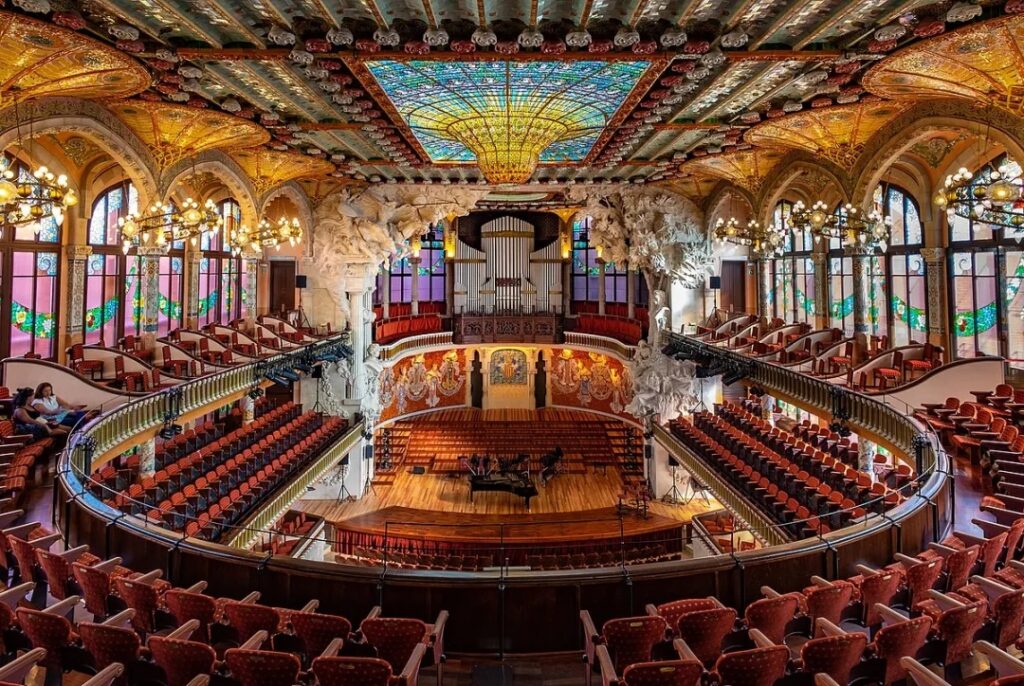
The Palau de la Música Catalana is not just a building but a work of art. Its unique aesthetics and expressive decorations offer a delight for viewers and explorers alike, becoming an integral part of Barcelona’s musical culture.
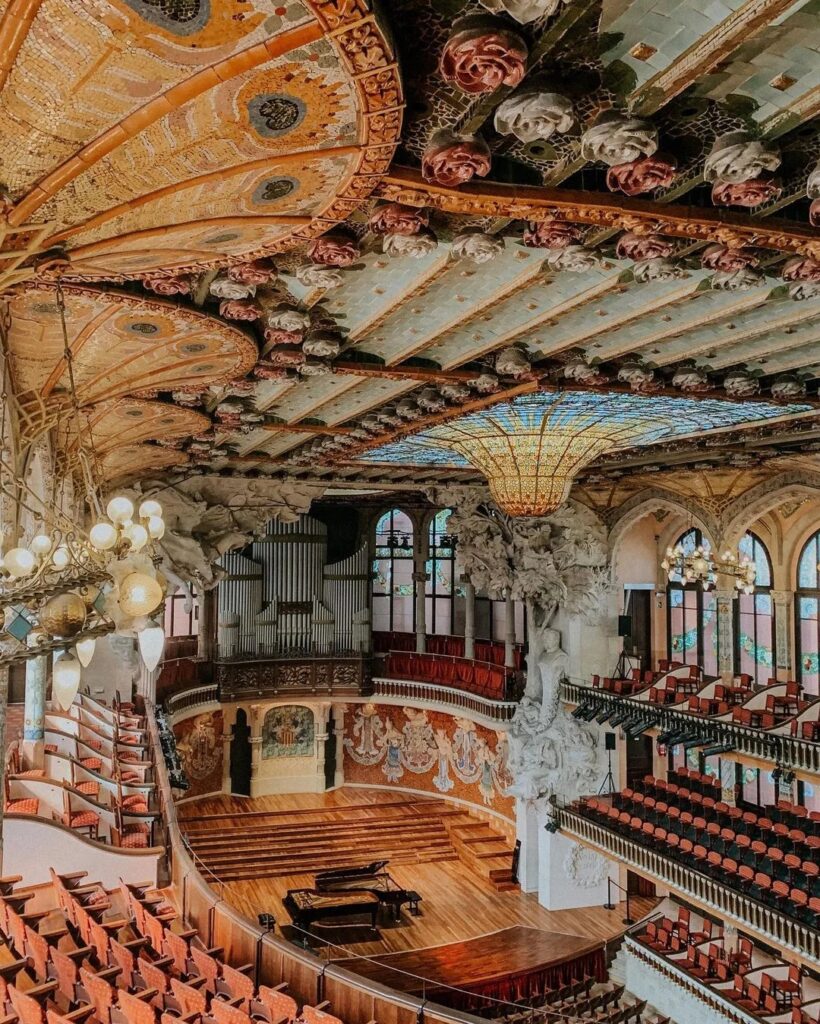
Hospital de la Santa Creu i Sant Pau
The Hospital de la Santa Creu i Sant Pau is one of the most influential hospital buildings in the world, celebrated for its grand architectural style, rich cultural value, and elegant decorations. It’s often hailed as “one of the most beautiful hospitals in the world.”
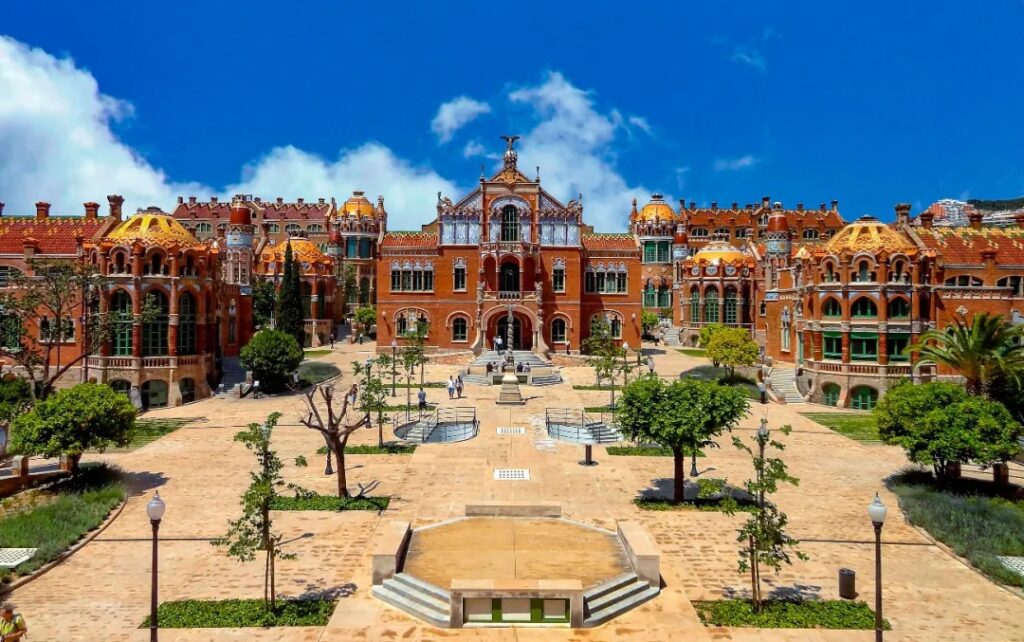
The hospital consists of a series of small red-brick buildings, with intricate details and colorful mosaic decorations that dazzle the eye. These buildings are interspersed with gardens and green spaces.
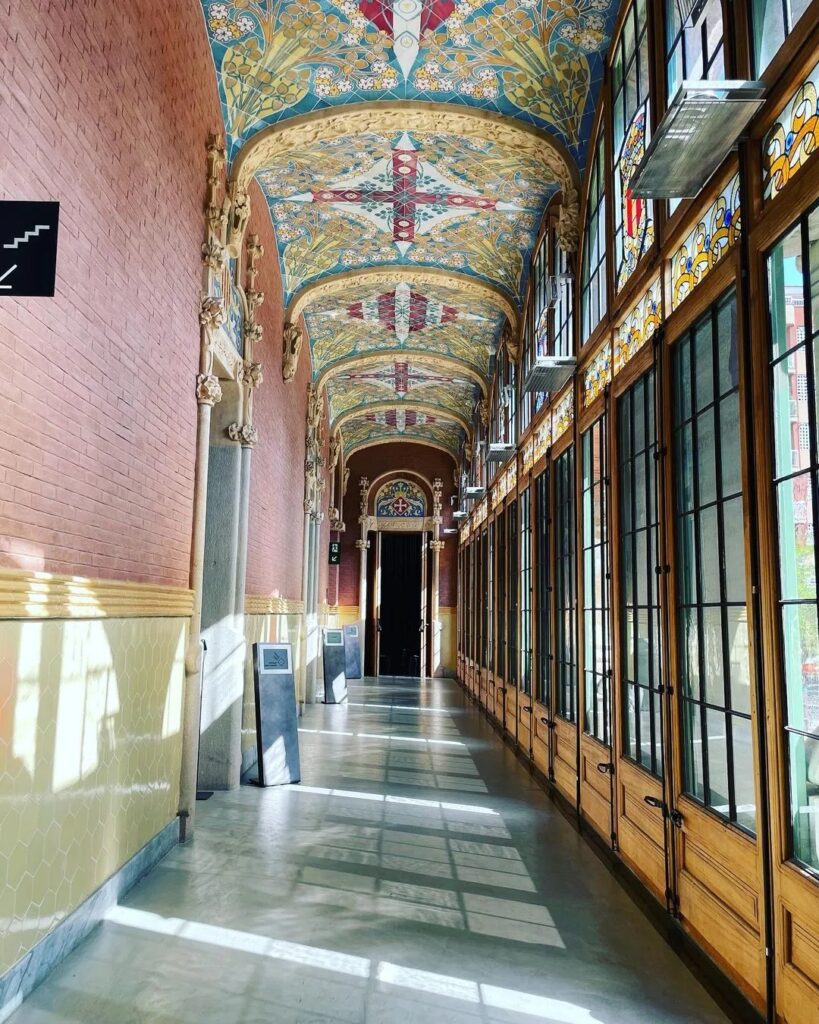
The entrance building’s top features a spire, from which one can overlook the entire hospital.
Each area of the hospital is adorned with rich decorations, historical mosaic panels, and sculptures by Pau Gargallo, adding to the architectural and courtyard charm.
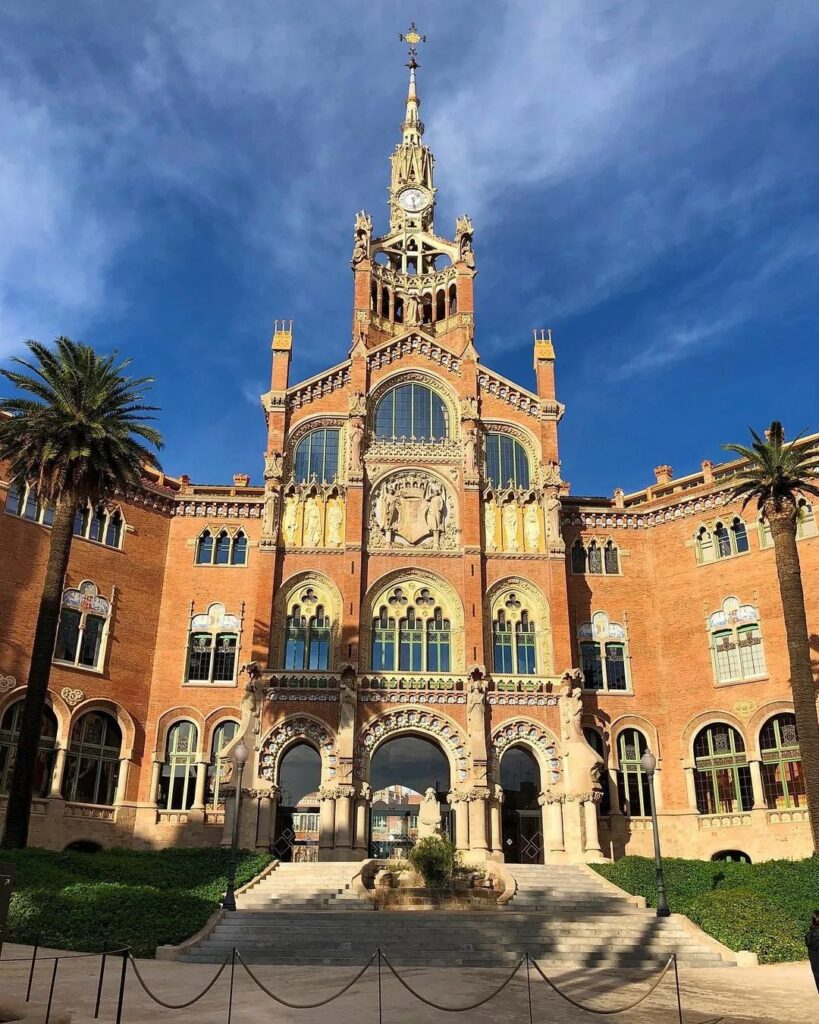
The hospital’s interior staircases and ceilings feature Islamic art influences, with stained glass windows and exquisite decorations worth savoring.
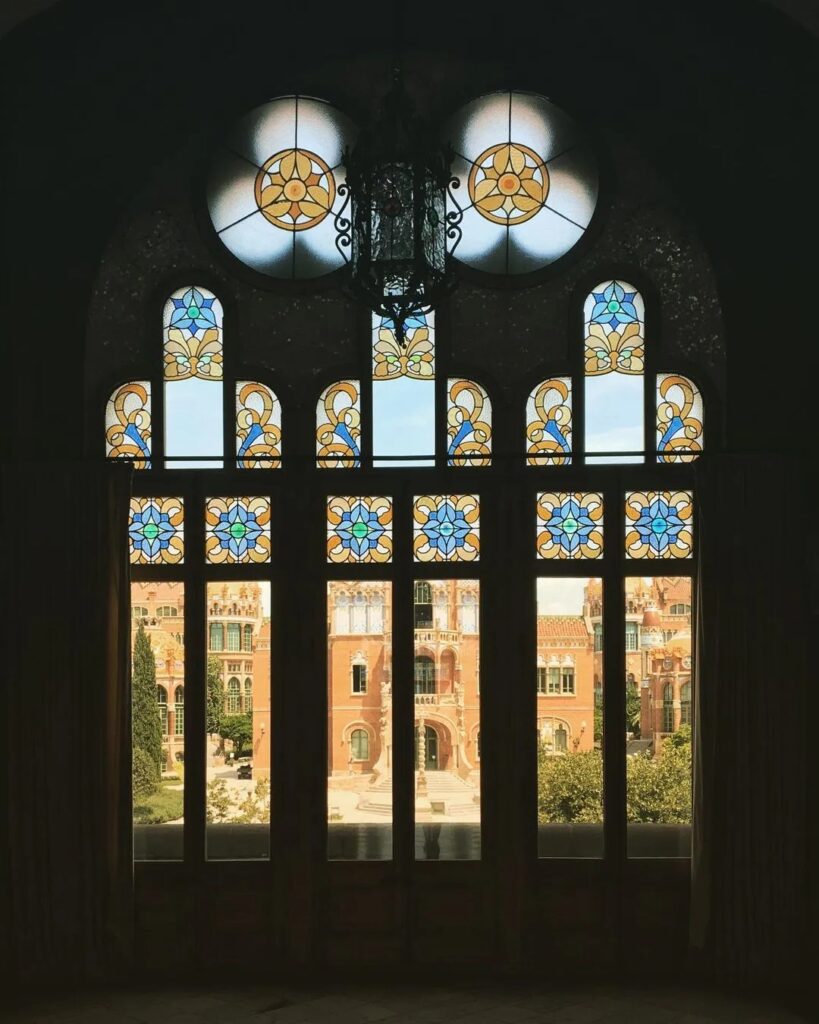
Temple Expiatori del Sagrat Cor
The Temple Expiatori del Sagrat Cor is one of Barcelona’s most famous temples, located on the top of Mount Tibidabo, a Roman Catholic basilica.
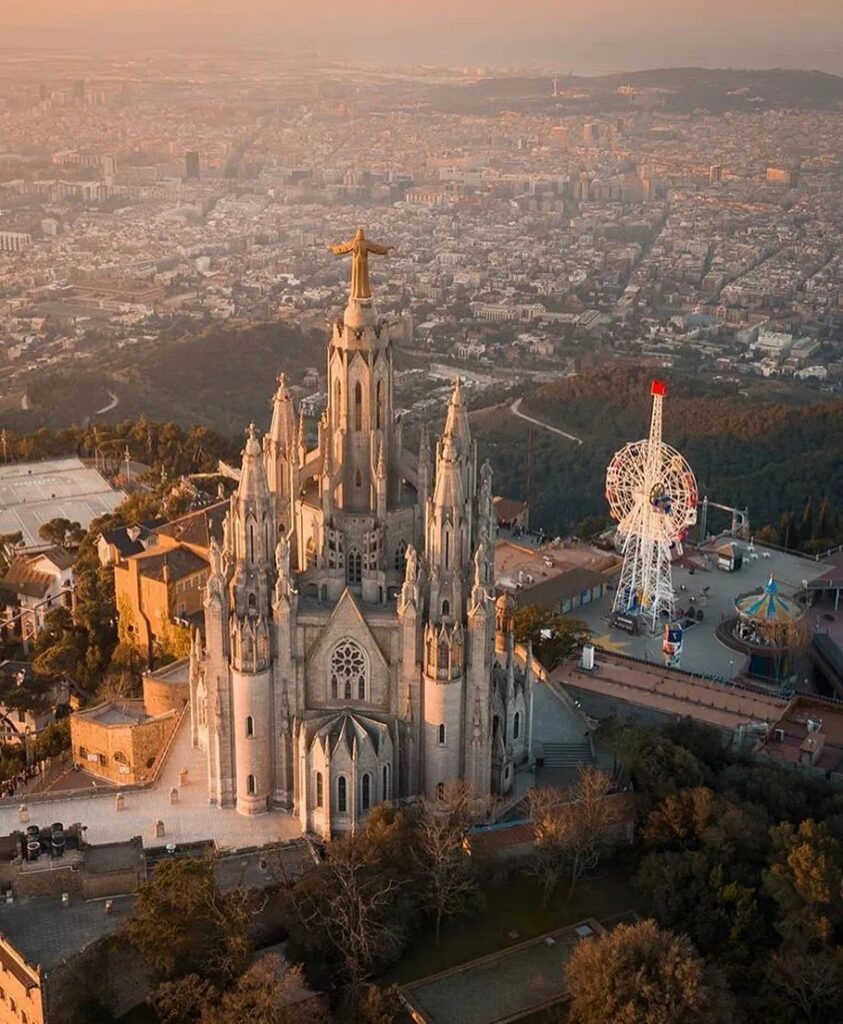
It’s a typical example of Gothic architecture, with its exterior decorated by stained glass windows and rose windows, drawing the attention of millions of visitors.
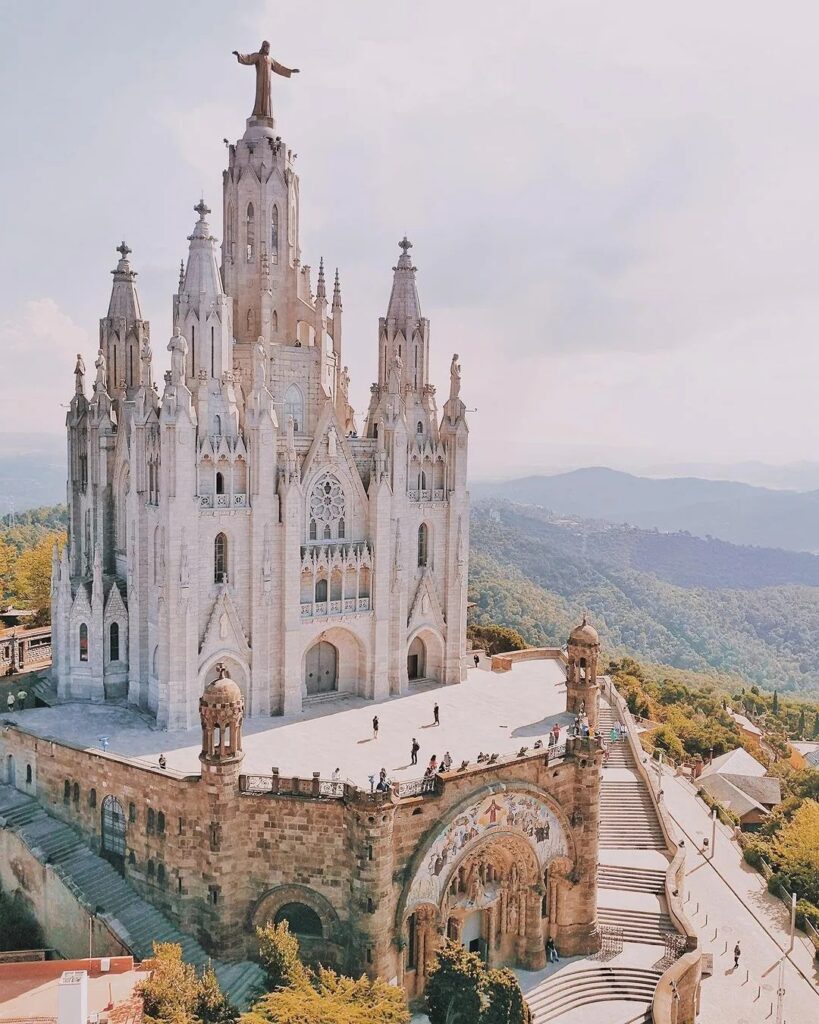
The temple’s unique underground crypt adopts a neo-Byzantine style, incorporating Gothic and classical elements, with modern decorations that leave a lasting impression.
At the top of the Temple Expiatori del Sagrat Cor stands a 7-meter-tall statue of Jesus, with arms outstretched, seemingly embracing the people below, exuding a divine atmosphere. From here, one can enjoy a panoramic view of Barcelona, a truly magnificent sight.
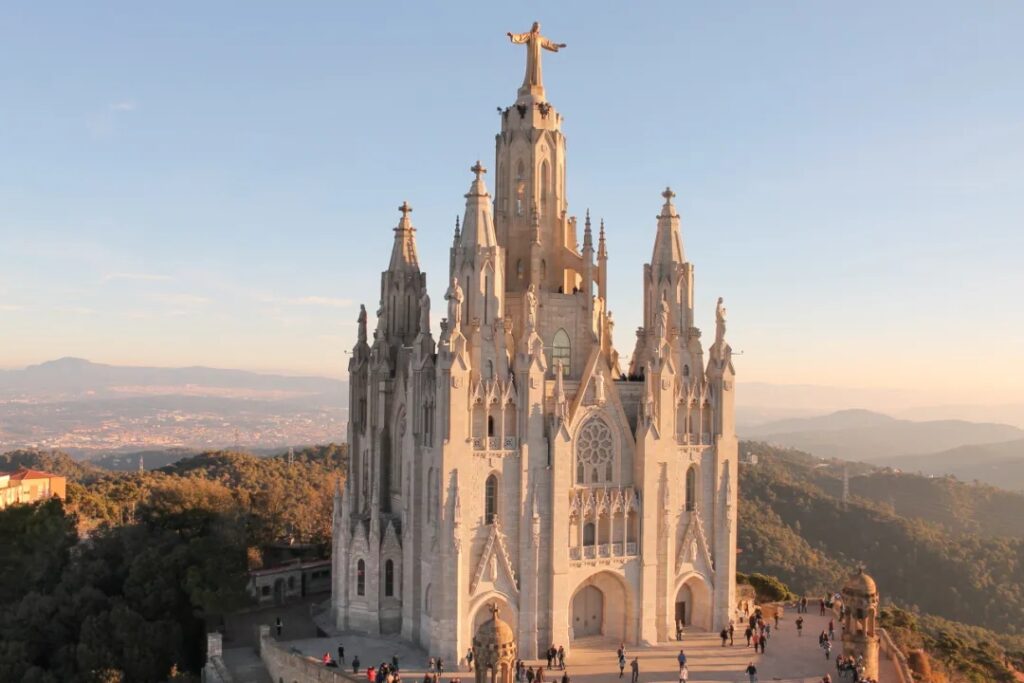
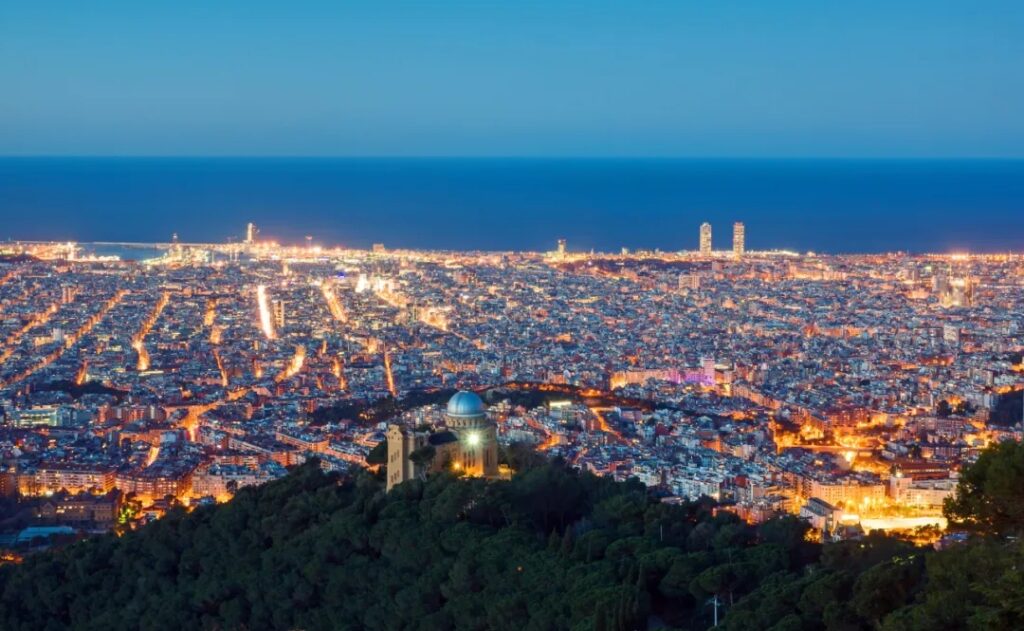
Travel Seasons:
Spring (March-May): Barcelona’s climate is pleasantly warm, with clear skies, perfect for exploring the city center and visiting famous landmarks.
Summer (June-August): Summer is hot, ideal for sunbathing and swimming at the beach, or engaging in various outdoor activities and nightlife.
Autumn (September-November): Autumn is Barcelona’s peak tourist season. Visitors can explore concert halls and museums, enjoy local fresh cuisine, and partake in unique seasonal celebrations.
Witer (December-February): Winter is the off-season for tourism in Barcelona, with cooler weather, but the city remains enchanting. One can shop at Christmas markets and savor traditional foods.
Language:
Official languages include Spanish and Catalan, with English widely spoken.
